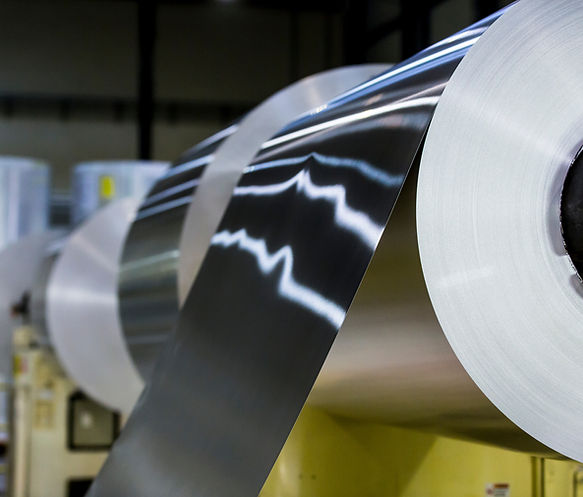
Stainless Steel
Our stainless steel is produced by combining iron with a minimum of 10.5% chromium. This process creates a steel that is highly resistant to corrosion and staining, making it ideal for applications where hygiene and cleanliness are important, such as in the food processing industry.


Understanding Stainless Steel: Definition and Properties
Stainless steel is a versatile and corrosion-resistant alloy that has revolutionized the world of metallurgy. Widely used in various industries from kitchenware to construction, stainless steel stands out due to its durability, aesthetic appeal, and resistance to rust and staining.
History and Evolution of Stainless Steel
The discovery of stainless steel can be traced back to the early 20th century. Harry Brearley of Sheffield, England, is often credited with inventing stainless steel in 1913. His aim was to create gun barrels that resisted erosion. Instead, he stumbled upon a rust-resistant alloy. Over the decades, different grades and types of stainless steel were developed, each designed for specific applications and environments.
Key Components of Stainless Steel
Stainless steel is an alloy, which means it’s a mixture of different metals. The primary component is iron. Chromium is added (at least 10.5%) to provide corrosion resistance. Other elements like nickel, manganese, and carbon may also be present in varying amounts, determining the steel’s properties and classification.
Popular Types and Grades of Stainless Steel
There are various types of stainless steel, each with distinct properties:
Austenitic Stainless Steels: Non-magnetic and known for their formability and corrosion resistance. Examples include 304 and 316 grades.
Ferritic Stainless Steels: Magnetic steels with high chromium and low carbon content. Example: 430 grade.
Martensitic Stainless Steels: These can be hardened by heat treatment and are magnetic. Example: 410 and 420 grades.
Kitchen and Dining: From cutlery to sinks, stainless steel’s resistance to corrosion and staining makes it a popular choice for kitchen tools and appliances.
Construction and Architecture: Its strength and anti-corrosion properties have made stainless steel a sought-after material for building facades, bridges, and monuments.
Medical Instruments and Devices: Being easy to sterilize, stainless steel is commonly used for surgical instruments, dental tools, and other medical devices.
The Environmental Impact of Stainless Steel
Sustainability and Recycling: Stainless steel is 100% recyclable. Its longevity ensures less frequent replacement, reducing waste. Moreover, over 50% of new stainless steel comes from recycled materials, underlining the industry’s commitment to sustainability.
Environmental Footprint in Production: While the production of stainless steel requires high energy, ongoing research and technological advancements are aiming to reduce its environmental impact.
Reducing Carbon Emissions: Stainless steel plays a role in the green energy sector, especially in solar panels and wind turbines, facilitating a transition to cleaner energy sources.
Stainless steel is a pivotal material in modern society. Its durability, versatility, and sustainable properties make it indispensable in various industries. As technology progresses, the relationship between stainless steel and global sustainability is expected to grow even stronger.
Stainless Steel Maintenance and Care
Cleaning Techniques: Stainless steel’s resistance to rust and staining doesn’t mean it’s immune to dirt and smudges. Regular cleaning with mild detergent, warm water, and a soft cloth can keep it shining. For stubborn stains or grime, specialized stainless steel cleaners are available.
Avoiding Scratches and Dents: While durable, stainless steel can scratch. Avoid using abrasive scrubbing pads. Instead, use a soft cloth or nylon-bristle brush. Always scrub in the direction of the steel grain for best results.
Preventing Corrosion:Although it’s termed “stainless,” this steel can corrode under certain conditions, especially when exposed to salt. Ensuring proper ventilation, regular cleaning, and keeping the material dry can help prevent corrosion.
Innovations and Future of Stainless Steel
Advanced Grades and Alloys: Research is ongoing to develop new stainless steel grades with enhanced properties, such as increased strength, better heat resistance, or improved weldability.
Expanding Applications in Technology: As technology advances, stainless steel finds its way into innovative applications. From electric vehicle components to advanced medical devices, the scope for stainless steel is broadening.
Combating Global Challenges: Stainless steel plays a role in addressing global challenges. For instance, its use in water treatment plants helps ensure clean water supply, and its application in renewable energy infrastructure aids in combating climate change.
Stainless steel has profoundly influenced the modern world. Its blend of strength, aesthetic appeal, and corrosion resistance makes it a staple in multiple industries. As we look to the future, it’s evident that stainless steel will continue to shape innovations, technologies, and solutions for global challenges. Embracing its potential, while understanding its limitations, will ensure its continued relevance in the decades to c
Get Your Quote
Got a question or need help? We will forward your request to the right contact and get back to you as soon as possible.
